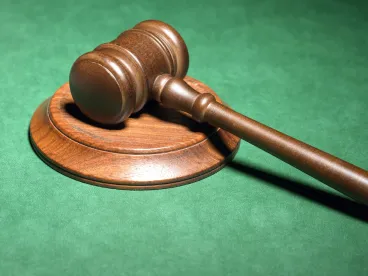On October 23, 2017, the US Court of Appeals for the Seventh Circuit reversed itself by determining that proximate cause—and not the “but-for” causation test that the court adopted 25 years ago—is the appropriate standard to determine causation in a claim under the False Claims Act (FCA). United States v. Luce, No. 16-4093 (7th Cir. Oct. 23, 2017).
The United States brought suit against defendant Robert S. Luce under the FCA and the Financial Institutions Reform, Recovery and Enforcement Act (FIRREA) in 2011 based upon Fair Housing Act (FHA) certifications included in annual verification reports that Luce and his subordinates signed on behalf of the mortgage company he owned and operated. Although Luce had been indicted in 2005 for an unrelated matter, the mortgage company continued to submit certifications stating that no officers of the company were then subject to criminal proceedings. Only in February 2008, after almost three years had passed since the defendant’s indictment, did the company notify an inspector with the US Department of Housing and Urban Development (HUD) of the indictment. HUD issued a Referral for Suspension/Disbarment of the company shortly thereafter.
In 2016, the US District Court for the Northern District of Illinois granted summary judgment in favor of the government related to the annual verification forms. While the government’s motion for summary judgment on damages was pending, the Supreme Court issued its Escobar opinion, causing the district court to request briefs from the parties addressing the opinion. In his brief, the defendant argued that the certifications were not material under Escobar’s materiality standard and that Escobar’s “instruction to apply common-law fraud principles required the application of proximate, rather than but-for, causation.” The district court found that the defendant’s false certifications were material under the Escobar standard and declined to adopt a proximate cause standard, finding that the false certifications satisfied the “but-for” FCA causation standard established by the Seventh Circuit.
The Seventh Circuit affirmed the materiality finding of the district court, but reversed its holding on causation.
The Seventh Circuit reconsidered its long-standing position on “but-for” causation adopted in United States v. First National Bank of Cicero, 957 F.2d 1362 (7th Cir. 1992), which introduced a circuit split on the causation standard under the FCA. No other circuit followed suit to endorse this view of FCA causation.
The defendant argued that the common law does not evaluate a defendant’s liability using “but-for” causation but rather requires a plaintiff to prove proximate causation. Coupled with Escobar’s discussion of common law fraud principles in the FCA context, the defendant concluded that the Seventh Circuit’s “but-for” test was no longer viable. The Seventh Circuit declined to “say whether Escobar, standing alone, would warrant its revisiting the issue,” noting that Escobar did not expressly address the question of causation. However, the court found that a careful reevaluation of its FCA precedent was prudent after Escobar.
Upon review, the Seventh Circuit found that “the statutory language of the FCA does not suggest that Congress sought to depart from the common-law understanding of causation in fraud cases.” The court further noted that common law fraud cases evaluate liability under proximate and not “but-for” causation, describing the requirements for establishing proximate cause in the context of negligence in the Seventh Circuit as an inquiry that encompasses both cause in fact (i.e., “the defendant’s conduct was a material element and a substantial factor in bringing about the injury”) and legal cause (i.e., “the injury is of a type that a reasonable person would see as a likely result of his or her conduct”). In addition, the court evaluated and endorsed the reasoning of the circuits that had previously adopted the proximate cause standard for liability under the FCA. Accordingly, the Seventh Circuit reversed the precedent set in Cicero and adopted the proximate cause standard for FCA cases. The court remanded the case to the district court for further proceedings.
Application of the proximate cause standard to FCA cases in the Seventh Circuit, as opposed to the but-for causation standard, means that plaintiffs now face a more stringent standard when seeking to establish causation under the FCA in that circuit. As a result, Seventh Circuit defendants are in a better position to defeat a motion for summary judgment with the argument that a plaintiff has not sufficiently developed evidence of the reasonable foreseeability of the government’s damages as a result of the conduct in question.




 />i
/>i

